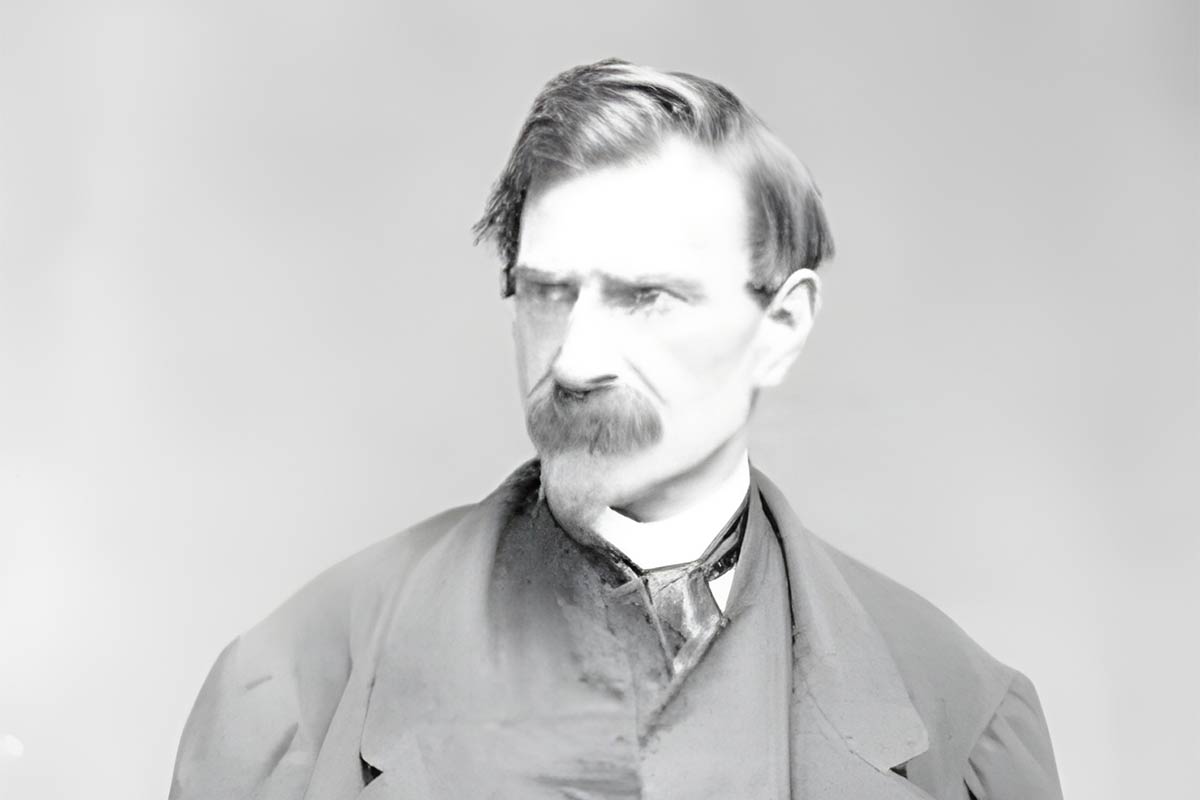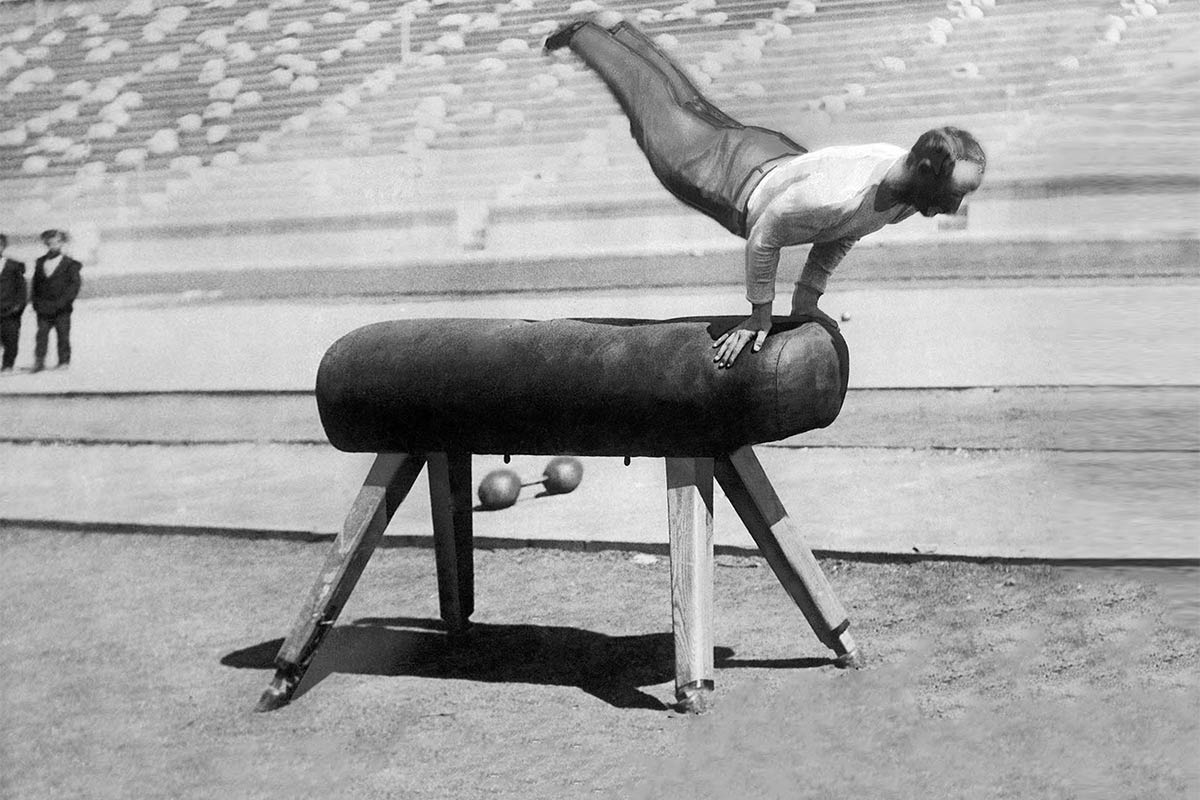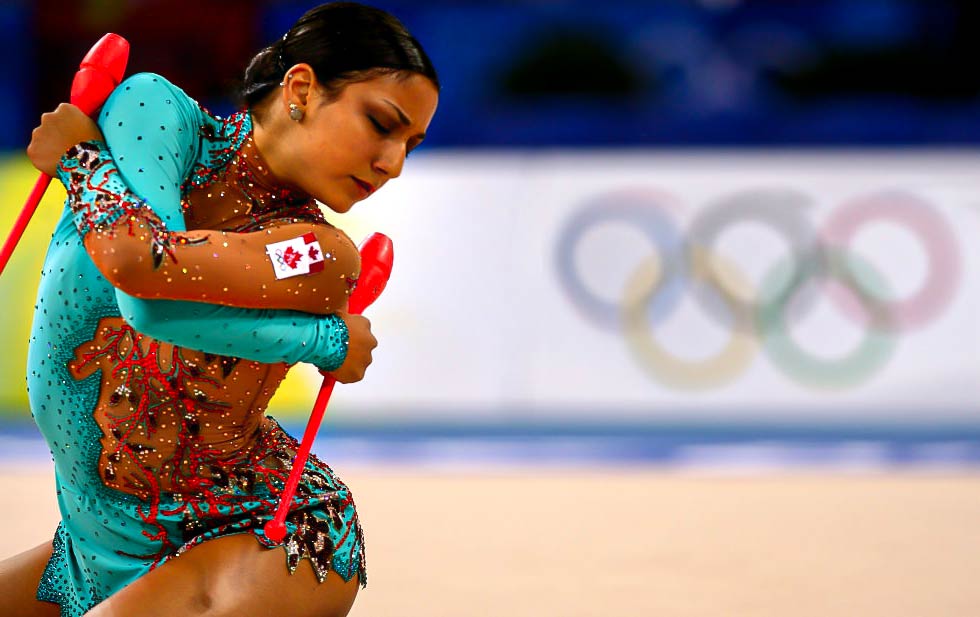
The roots of rhythmic gymnastics go back to ancient times. Evidence of this can be found in ancient Egyptian pottery and pyramids depicting groups of women dancing with balls.

Rhythmic gymnastics as a sport began to take shape in the 19th century. Vocal teacher and stage art theorist from France – François Delsarte – believed that physical exercise plays an important role in maintaining balance, beauty, health, and success.
The usefulness of Delsarte’s “expression system” was to improve the performance of vocal and theatrical productions and dances. His ideas about aesthetics and movement formed the core principle of modern gymnastics expression through movement.
The source of inspiration for the ideas of the Swiss teacher and composer Emile Jacques-Dalcroze was the harmony of dance and music. In our days, the institute he founded in Geneva continues to teach rhythmic gymnasts the methods of the system of rhythmic physical movements to music, first developed by Émile Jacques-Dalcroze.
In 1911, the German teacher of the Dalcroze School, Rudolf Bode, founded the Bode School of Rhythmic Gymnastics, which soon trained hundreds of teachers. The school, functioning to this day, has made a great contribution to the technical development of rhythmic gymnastics.
Gymnastics at the Olympics

In 1896, gymnastics appeared in the program of the first Olympic Games, which included swinging the mace and climbing the rope. In 1903, seven years later, the International Gymnastics Federation (FIG) organized the first world championship open to men only. Competitions for female gymnasts were added to the program in 1934. However, as early as 1928, female gymnasts could take part in the Olympic team competitions.
In 1963, the FIG officially recognized rhythmic gymnastics as a sport. The first World Championship in this type of gymnastics took place in the same year. In 1984, rhythmic gymnastics was included in the program of the Olympics, where only individual performances were presented. In 1996, 12 years later, teams in group exercises were included in the programs of the largest complex sports competitions in the world.
History of Olympics Rhythmic Gymnastics in Canada

Canada has strong gymnasts in both rhythmic and artistic disciplines. For the first time, gymnasts from Canada performed at the Olympic Games, which took place in 1908. Then only men took part in personal all-around and team competitions.
Canadian athletes have competed in every Olympic Games since 1956. In the same year, gymnastics has returned to the Olympics with competitions for both men and women.
The rhythmic gymnastics competition in the program of the Olympic Games was first held in 1984 in Los Angeles, USA. Canadian gymnast Laurie Fung won the gold medal and became the first Olympic champion in this sport.
As for the participation of gymnasts from Canada in other competitions, Alexandra Orlando won six gold medals at the Commonwealth Games in Melbourne, 2006. This made her Canada’s most titled female athlete at those Games. In 2012, Canada’s senior group of gymnasts became the country’s first group to compete in the Olympics, finishing 11th in the qualifying rounds. The team entered the history of rhythmic gymnastics in Canada.
Medallists and Teams
Below you can find information about the medalists and teams that have taken part in the Olympic Games and other competitions.
| Event | Athlete Name | Final Grade | Olympic Games |
|---|---|---|---|
| Individual All-Around – Women | Lori Fung | Gold | Los Angeles, 1984 |
Young Canadian medalist Laurie Fang was born in Vancouver, Canada, in 1963. In the 70s, the girl began to do rhythmic gymnastics. In 1982, Laura had already become the champion of Canada.
In 1980, Laura Fang missed the Olympic Games, like many athletes from other countries, due to the boycott of the Olympic Games in Moscow. However, already in 1984, at the competitions in Los Angeles, Laura Fang, a 21-year-old Canadian gymnast, won the gold medal.
After the victory, Laura began preparations for the next Olympics in 1988 but fell ill. Due to illness, she had to end her professional sports career.
But Laura’s life remained connected with gymnastics. After completing her sports career, she became a coach for Canada, the United States and Mexico. Today, Laura Fang lives in British Columbia, where she is the coach of one of the strongest rhythmic gymnastics clubs in the country.
Teams
| Competition, Year | Athletes Team |
|---|---|
| Pan American Games, 2019 | Alexandra Udachina Alexandra Zilyuk Carmel Kallemaa Carmen Whelan Katherine Uchida (2 silver medals) Natalie Garcia (1 silver medal) Vanessa Panov |
| Pan American Games, 2015 | Anjelika Reznik Carmen Whelan Katrina Cameron Lucinda Nowell Maya Kojevnikov Patricia Bezzoubenko (1 silver and 1 bronze medals) Vanessa Panov Victoria Reznik |
| Olympic Games, 2012 | Alexandra Landry Anastasiya Muntyanu Anjelika Reznik Katrina Cameron Kelsey Titmarsh Rose Cossar The Canadian team finished in 11th place. |
| Olympic Games, 2008 | Alexandra Orlando The Canadian gymnast took 18th place. |
| Olympic Games, 1984 | Lori Fung The athlete earned the first rhythmic gymnastics gold medal in the history of the Olympic Games. |
Interesting Facts about Rhythmic Gymnastics
- In the first Rhythmic Gymnastics World Championships 28 gymnasts from 10 countries took part.
- Rhythmic gymnastics is one of two exclusively women’s sports included in the Olympic Games. The second is synchronized swimming.
- Canadian gymnast Lori Fang became the first Olympic champion in rhythmic gymnastics.
- Rhythmic gymnasts, before the advent of special items, used to perform with scarves. Since there were no special requirements, the trainers used the apparatus according to their wishes. The current set of apparatus were approved in the 1960s.
- Maria Gigova from Bulgaria is the first gymnast to become a three-time world champion (1969, 1971 and 1973). Another gymnast who achieved this record 22 years later was Maria Petrova, also from Bulgaria (1993, 1994, and 1995).
